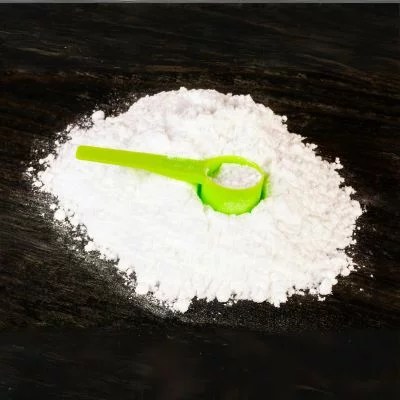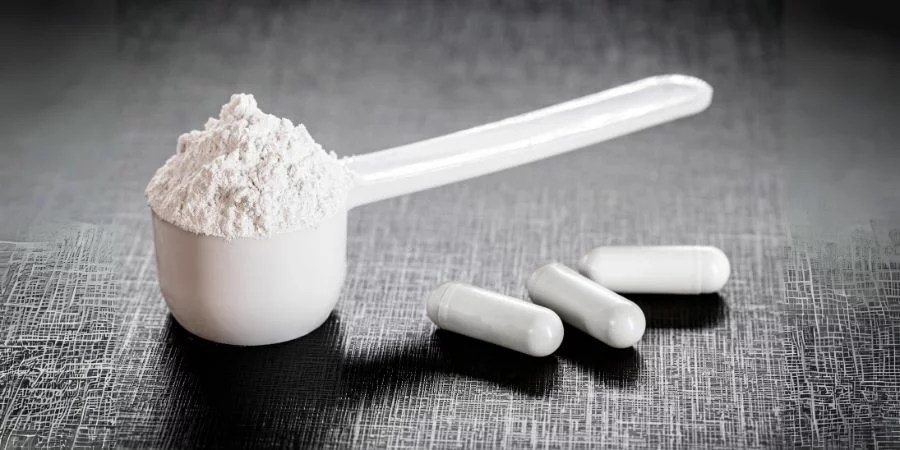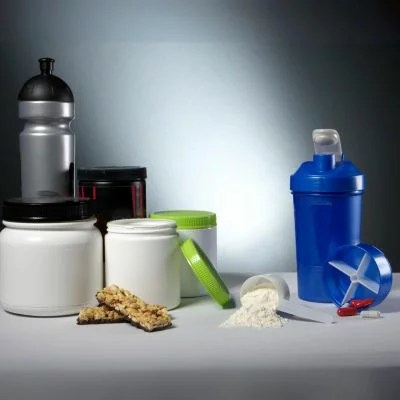Introduction to Creatine: Timing and Benefits
Welcome to Super Achiever Club, the epicenter of self-improvement, where we empower free-thinking individuals with crucial knowledge in health, wealth, and social dynamics. Today, we delve into the world of creatine, a staple in the fitness and athletic realms, focusing on the nuances of its intake timing for optimal benefits.
Contents
Overview of Creatine
Creatine is more than just a buzzword in fitness circles; it’s a game-changer for those looking to enhance their physical performance and muscle growth. Primarily found in muscle cells, creatine plays a pivotal role in generating high-energy ATP, crucial for heavy lifting and high-intensity exercise.
What Creatine Offers:
- Enhanced Muscle Mass: Aids in muscle growth and strength.
- Boosted Performance: Improves high-intensity exercise capability.
- Rapid Energy Recovery: Helps muscles recover energy swiftly during workouts.
For a deeper understanding of creatine, consider exploring our article on What is Creatine.
Importance of Dosage Timing
The question of “when to take creatine” is as vital as choosing the right supplement. The timing of creatine intake can significantly influence its effectiveness, absorption rate, and overall impact on muscle growth and performance.
Key Points in Dosage Timing:
- Pre or Post-Workout?: The debate continues, but recent studies suggest post-workout might be more beneficial. Learn more about this in our detailed guide on Creatine Before or After Workout.
- Consistency is Key: Regular daily intake is crucial, regardless of workout days. Delve into this topic further in How Often Should You Take Creatine.
- Individualized Approach: Understanding your body’s response is essential. What works for one may not work for another.
By understanding the intricacies of creatine intake, including the optimal dosage and timing, you position yourself for maximized results. As we explore the depths of creatine usage, remember that knowledge is the first step towards achieving your fitness goals.

In the following sections, we will unravel the layers of creatine usage, helping you make informed decisions for your health and fitness journey. Stay tuned for a comprehensive exploration of this powerhouse supplement.
Next Up: We’ll dive into “What is Creatine?” – defining this key player in the world of supplements and its functions. Stay informed, stay ahead, and let’s unlock the full potential of creatine together! 🌟🏋️♀️🌟
What is Creatine? Unraveling the Powerhouse of Muscle Energy
Definition and Function of Creatine
Creatine is not just another supplement; it’s a naturally occurring compound that plays a crucial role in energy production, particularly in muscle cells.
How Creatine Works:
- Energy Boost: At its core, creatine helps regenerate ATP (Adenosine Triphosphate), the primary energy currency of the cell, especially during short bursts of high-intensity activities like sprinting or weight lifting.
- Enhanced Performance: By increasing ATP availability, creatine enables muscles to perform better during exercise, leading to improvements in strength, power, and endurance.
- Muscle Health: Creatine also aids in muscle recovery and may help increase muscle mass over time.
For a deeper understanding of creatine’s role in the body, visit our comprehensive guide on What is Creatine in the Body.
Types of Creatine Supplements
Creatine comes in various forms, each with its unique properties and benefits. Let’s explore some of the most popular types:

- Creatine Monohydrate: The most researched and widely used form of creatine. It’s known for its effectiveness and affordability. Learn more about this type in Best Creatine Monohydrate.
- Micronized Creatine: This is creatine monohydrate, but with smaller particles for better solubility and absorption. Check out our recommendations for Best Micronized Creatine.
- Creatine Hydrochloride (HCL): Known for its superior solubility and potentially less bloating compared to monohydrate. Discover more in Best Creatine HCL.
- Buffered Creatine: Claimed to be more effective than monohydrate with less side effects, though research is limited.
- Creatine Ethyl Ester: Marketed as a more absorbable form of creatine, but research suggests it may not be as effective as monohydrate.
Choosing the Right Form:
While each form has its advocates, creatine monohydrate remains the gold standard for its balance of effectiveness, safety, and cost. However, individual preferences and responses can vary, so exploring different types may be beneficial. For those looking for convenience, Best Creatine Pills & Capsules provides a great alternative to powders.
Creatine: Mastering the Timing for Maximum Impact 💪🌟💪
Ideal Timing for Creatine Intake
The timing of creatine consumption can influence its effectiveness, especially in relation to your workout routine.
Pre-Workout vs. Post-Workout:
- Pre-Workout: Taking creatine before a workout aims to boost the available energy in your muscles, potentially enhancing performance.
- Post-Workout: Post-exercise creatine intake is often recommended for better absorption and utilization by the muscles, as they are in a state of recovery and replenishment.
For insights on pre or post-workout supplementation, explore our article on Creatine Before or After Workout.
On Rest Days:
- Even on non-training days, maintaining a regular creatine schedule is important for keeping muscle creatine levels saturated. Consider taking it with a meal for better absorption.

Absorption and Effectiveness
Understanding how the body absorbs and utilizes creatine can help optimize its effectiveness.
Factors Affecting Creatine Absorption:
- Meal Timing: Creatine absorption may be enhanced when taken with a carbohydrate-rich meal, as insulin can help increase muscle uptake of creatine.
- Consistency: Regular daily intake, rather than sporadic dosing, ensures a steady supply of creatine to the muscles.
- Hydration: Adequate water intake is crucial when supplementing with creatine, as it helps in its transportation and reduces the risk of cramping and dehydration.
To learn more about proper creatine usage, including hydration, visit our guide on How Much Water to Drink with Creatine.
Maximizing Muscle Uptake:
- Creatine Loading Phase: Some opt for a ‘loading phase’ – taking a higher dose of creatine for the first few days – followed by a maintenance phase. This method may rapidly increase muscle creatine stores. More on this can be found in Creatine Loading Phase.

How Often to Take Creatine: Strategizing for Optimal Results 💪🌟💧
Daily Dosage Recommendations
Creatine dosage isn’t one-size-fits-all. It varies based on factors such as body weight, activity level, and individual goals.
General Guidelines:
- Standard Dosage: A common recommendation is 3-5 grams of creatine per day.
- Body Weight Consideration: Some experts suggest 0.03 grams per kilogram of body weight.
For detailed dosage insights, especially for different body types, check out How Much Creatine Should I Take.
Loading Phase vs. Maintenance Phase
Creatine supplementation can be approached in two phases: the loading phase and the maintenance phase.
Loading Phase:
- Purpose: To rapidly saturate the muscle stores of creatine.
- Duration: Typically 5-7 days.
- Dosage: Around 20 grams per day, divided into 4 servings.
- Effect: This high-dose short-term strategy is believed to quickly increase muscle creatine levels.
Learn more about this approach in Creatine Loading Phase.
Maintenance Phase:
- Purpose: To maintain the elevated creatine levels achieved during the loading phase.
- Dosage: Reduced to 3-5 grams per day.
- Duration: Indefinite, as long as supplementation is desired.
Is Loading Necessary?
- The loading phase is optional. Skipping it and sticking to a regular maintenance dose will still increase muscle creatine stores, albeit over a longer period.

Considerations and Tips
- Consistency: Whether you choose to load or not, consistent daily intake is key to maintaining elevated creatine levels.
- Activity Level Adaptation: Athletes or individuals with high training volumes may benefit from the higher end of the dosage spectrum.
- Hydration Focus: Increased creatine intake should be accompanied by adequate water consumption to facilitate absorption and prevent dehydration.
For tips on balancing creatine intake with hydration, see How Much Water to Drink with Creatine.
When to Take Creatine: Optimizing Timing for Peak Performance and Recovery 💪🌟💧
Strategic Timing for Performance
Timing your creatine intake can play a significant role in how it affects your athletic performance.
Pre-Workout Benefits:
- Energy Surge: Taking creatine before a workout can increase phosphocreatine stores in your muscles, leading to enhanced energy production during high-intensity activities.
- Efficiency: It may boost your ability to perform more reps or sustain higher intensity for a longer duration.
Post-Workout Advantages:
- Muscle Saturation: Post-exercise, muscles are like sponges – more receptive to nutrient uptake. Creatine taken at this time may be more efficiently absorbed.
- Synergy with Carbs and Protein: Combining creatine with a post-workout meal or shake that includes carbs and protein can further enhance its uptake and effectiveness.
For detailed insights into pre and post-workout supplementation, visit Creatine Before or After Workout.
Timing for Muscle Recovery and Growth
Creatine’s role doesn’t stop at just boosting performance; it’s also pivotal in muscle recovery and growth.
Optimal Recovery:
- Reduced Muscle Damage: Creatine can help in reducing muscle cell damage and inflammation post-exercise.
- Enhanced Recovery Process: It aids in quicker restoration of the muscle’s phosphocreatine stores, which are depleted after intense physical activity.

Muscle Growth:
- Supports Protein Synthesis: Creatine has been shown to support muscle hypertrophy (growth) by enhancing the body’s ability to synthesize new proteins.
- Cell Hydration: It increases the water content in muscle cells, a key factor in muscle growth.
To understand more about creatine’s impact on muscle growth, explore our article on Best Creatine for Muscle Growth.
Practical Tips
- Consistent Daily Intake: Whether you choose pre or post-workout, maintaining a consistent daily intake is crucial for keeping muscle creatine levels optimal.
- Rest Days: On non-training days, the timing is more flexible. Taking it with a meal can be beneficial for absorption.
How Often Should I Take Creatine Monohydrate? 💪🌟🕒
Creatine Monohydrate Basics
First, let’s understand what creatine monohydrate is. If you need a refresher, you can check out our comprehensive guide on What is Creatine.
Creatine monohydrate is one of the most well-researched and widely used forms of creatine. It’s a naturally occurring compound found in small quantities in certain foods and synthesized by the body. Creatine is essential for energy production during high-intensity, short-duration activities like weightlifting and sprinting.
Dosage Recommendations
The recommended dosage for creatine monohydrate can vary depending on your goals and body weight. Here’s a general guideline:
- Loading Phase: Some individuals choose to start with a loading phase where they take 20 grams of creatine monohydrate per day (divided into four doses) for 5-7 days. This helps saturate the muscles with creatine quickly.
- Maintenance Phase: After the loading phase, a maintenance dose of 3-5 grams per day is typically sufficient to maintain elevated creatine levels in the muscles.
However, it’s important to note that not everyone needs a loading phase. Some people opt for a steady 3-5 grams per day from the outset, which can also be effective. You can explore more about the loading phase in our article on Creatine Loading Phase.
Timing and Duration
Taking creatine monohydrate consistently is crucial for its effectiveness. You can choose to take it at any time of the day that suits your routine. Some prefer to take it before or after workouts for convenience, but there’s no significant advantage to timing. For more on this, you can check out our guide on Creatine Before or After Workout.
As for duration, creatine supplementation is generally safe for long-term use. Many individuals incorporate it into their daily routine indefinitely to support their fitness goals.
Scientific Research and Evidence

To delve deeper into the scientific aspect, let’s look at some research findings specific to creatine monohydrate:
- A meta-analysis published in the Journal of the International Society of Sports Nutrition found that creatine supplementation significantly improved muscle strength and body composition in resistance-trained individuals.
- Research published in the Journal of Applied Physiology suggests that creatine supplementation can enhance muscle recovery and reduce muscle damage, especially during intense training.
- A study in the Journal of the International Society of Sports Nutrition reported that creatine monohydrate supplementation increased muscle creatine content, which can lead to better exercise performance.
These studies demonstrate the effectiveness of creatine monohydrate in improving muscle strength, recovery, and overall athletic performance.

Personal Opinion & Experiences
I generally recommend taking creatine every day – in the optimal case, post-workout. And I have not seen it with many people yet, but if you have problems with your creatine digestion – just try to blend it in your meal or take several small portions a day.
– Felix Hesse (Founder of SAC)
Finding the Best Creatine for You
So now you know how often you should take creatine. But have you found the best creatine to fit your personal needs already? This is not an easy task to do. And that’s why we created specific guides for different forms & all your needs:
| Best Creatine Supplement | Best Creatine for Men |
| Best Creatine Brand | Best Creatine for Women |
| Best Creatine Monohydrate (Powder) | Best Creatine for Muscle Growth & Bodybuilding |
| Best Creatine Powder | Best Creatine for Teens |
| Best Creatine Pills & Capsules | Best Creatine for Bulking & Weight Gain |
| Best Creatine Gummies | Best Creatine for Athletes |
| Best Creatine HCL | Best Creatine for Beginners |
| Best Creatine Creapure | Best Creatine for Weight Loss & Cutting |
| Best Vegan Creatine | Best Creatine for Glute Growth |
| Where to Buy Creatine | Best Creatine for Older Adults |
The Science Behind It
Whenever possible we base our articles on scientific research & studies on Creatine.
Want to know more about it? Visit our dedicated page:

Conclusion
In our quest to uncover the best practices for creatine monohydrate intake, we’ve navigated through the intricacies of this powerful supplement. Here, in the Super Achiever Club, where we empower individuals to become super achievers in all aspects of life, we’ve gathered the key takeaways and best practices for using creatine monohydrate effectively.
Recap and Best Practices
- Dosage: For most individuals, a common dosage strategy includes a loading phase of 20 grams per day for 5-7 days, followed by a maintenance phase of 3-5 grams per day. However, some people may opt for a steady maintenance dose from the beginning.
- Timing: Creatine can be taken at any time of day that fits your routine. Whether it’s before, after, or during meals, there’s no significant advantage to timing.
- Duration: Creatine is generally safe for long-term use, and many people incorporate it into their daily routine indefinitely to support their fitness goals.
- Individual Variations: Remember that individual responses may vary, and it’s essential to find the dosing strategy that works best for you. Factors like body weight, training intensity, and personal goals play a role in determining your ideal creatine regimen.
- Stay Hydrated: Ensure you stay well-hydrated when using creatine. It can help prevent potential side effects like muscle cramps.
- Combine with a Balanced Diet and Exercise: Creatine is most effective when used as part of a well-rounded fitness and nutrition plan. Pair it with a balanced diet and regular exercise for optimal results.

Before embarking on any supplement regimen, including creatine, it’s crucial to consult with healthcare professionals. They can provide personalized guidance based on your specific health needs and goals. Your health and well-being should always be the top priority.
Here are some articles to inform yourself further about creatine:
- Tongkat Ali vs. Creatine
- What is Creatine
- Best Creatine Pills & Capsules
- Best Micronized Creatine
- Creatine HCL vs. Monohydrate
- Best Creatine Gummies
- How to Take Creatine
- Best Creatine for Women
- Best Creatine for Men
- Does Creatine Make You Gain Weight
These articles provide a wealth of information for those who wish to delve deeper into the world of creatine supplementation. Remember, knowledge is power, and we at the Super Achiever Club are here to empower you on your journey to becoming a super achiever.



